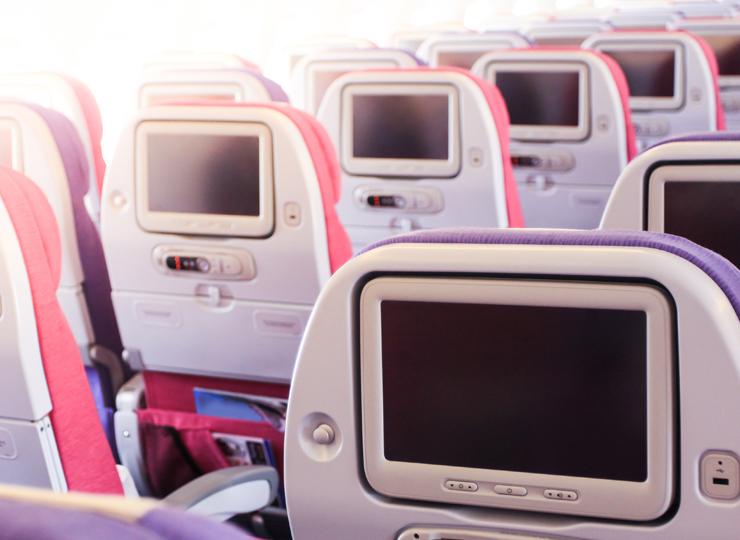

Sustainability spotlight: CTM's Online Booking Tool, Lightning
The Institute of Travel Management’s (ITM) most recent trend report highlighted that 75% of travel buyers are dissatisfied with their online booking tool’s (OBT) ability to include carbon budgets and carbon emissions at the point of sale. Furthermore, 24% of respondents said they will be introducing carbon budgets this year. When asked about sustainability, 60% of buyers said it was important that their technology complies with the carbon emissions dashboard and reporting.
“Responsible travel choices are still a key trend as corporates increasingly focus on meeting their organisation’s sustainability objectives,” said ITM CEO Scott Davies. “There’s been progress in moving the dial to bring supplier sustainability measures into travel programmes, but there is still a lot of work to be done to embed these initiatives and influence traveller behaviour.
He added, “That’s another reason why OBTs need to evolve and play a critical role in helping travellers and bookers make responsible choices.”
At Corporate Travel Management (CTM), our proprietary OBT Lightning already incorporates functionality to help travel buyers set, monitor and manage carbon budgets and carbon emissions at the point of sale, thanks to continued investment throughout Covid and beyond to put sustainability front and centre.
Josh Gunn, CTM Global Head of Product Marketing, sat down with Bev Fearis. Editor at Business Travel Magazine to outline how Lightning meets the needs of companies looking to cut their carbon footprint, provide a duty of care and other key features. Here’s what he had to say…
“We work on a really agile development cycle,” said Josh Gunn, CTM’s Global Head of Product Marketing. “We operate on two-week sprints when we add innovation, and part of our broader strategy around people and planet has been the sustainability, well-being and risk elements of Lightning.
When it comes to carbon budgets, there are three important tools within Lightning that help buyers make better decisions.
“The first is the budget bar,” explained Josh. “Once buyers enter their destination into Lightning, they will see a carbon budget bar at the top of the screen. Each budget could relate to the company, a team or even an individual traveller, and they can be set yearly, quarterly or monthly. The bar will highlight how much carbon budget remains to be spent. By displaying the bar in plain sight, rather than hiding it in a pop-up, buyers are primed to think consciously about how, when and why they choose to travel.”
Lightning also clearly labels each trip’s carbon emissions alongside the price at the point of sale and highlights the greenest choice with a CTM Green Choice banner across the internet research options, to make it unmissable.
“And, thirdly, with Lightning, if you are flying on a route where you could take a train, we will automatically do a rail search in the background. And we’ll highlight that when your search results pop up,” said Josh.
“At the top of the screen, Lightning will show you the difference in financial and emission savings between switching from flights to rail. Let’s take London to Edinburgh, for example, emissions will be cut almost in half and there will often be cost savings, too.
“By introducing these three tools, we are making a real difference at the point of sale and actually influencing traveller behaviour.”
Thanks to CTM’s partnership with RDC Aviation, Lightning’s flight emission calculations are based on hyper granular data, such as engine type, age of the aircraft, the investment that the airline is making in sustainable aviation fuels, plus seat configuration –how big the first class, premium and economy cabins are, for example.
“This data lets buyers compare airlines as well as individual flights. The same airline might operate two flights at different times on the same day, but if they are different aircraft with different engines and perhaps even different seat configurations, the buyer might find there is a variance of 10-30% between the emissions of two economy seats.”
With rail, CTM works with several rail providers through a combination of APIs and direct partnerships, including International Rail Limited, Evolvi, trainline and Assertis, depending on whether it is UK, European domestic or cross-border. Those calculations run in the background for a set number of routes where it is logical that a traveller might switch to a train.
While, technically, incorporating this type of functionality is complex to engineer, what the user sees is really simple: a banner highlighting what they could save in emissions and costs by switching.
“CTM’s priority is always on making it as simple as possible for users to make better decisions for their organisation, their travellers and the planet,” concluded Josh Gunn.
Eager to find out more about CTM’s Online Booking Tool, Lightning and sustainable travel?
Get in touch today.




